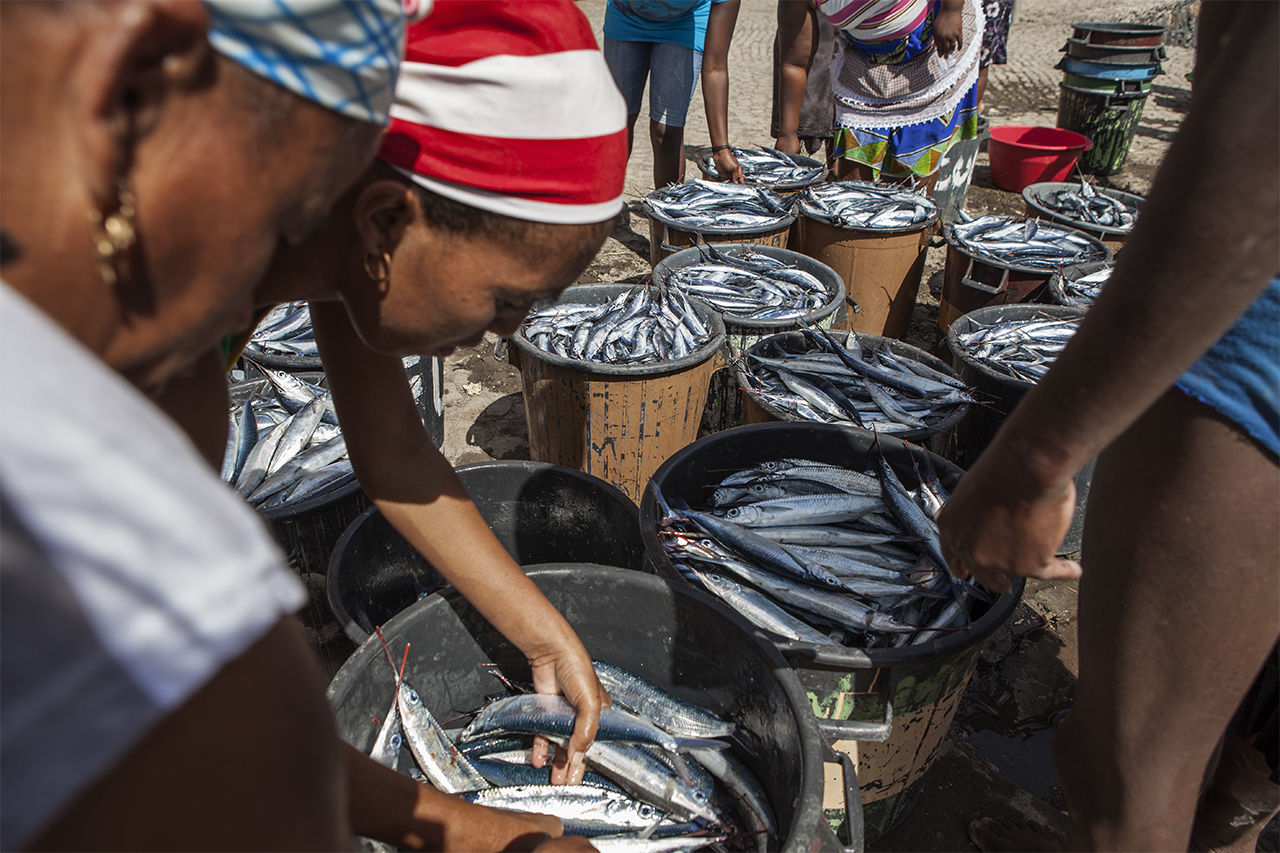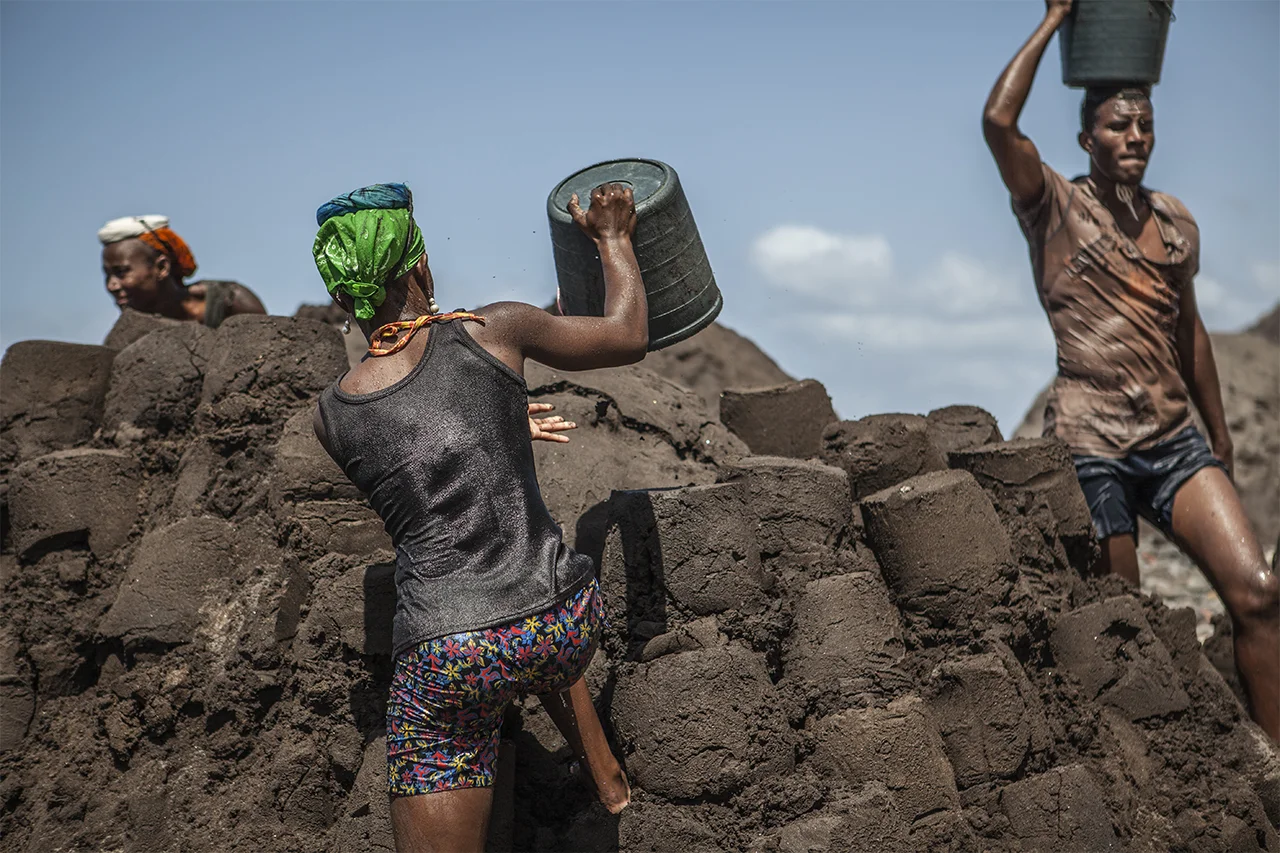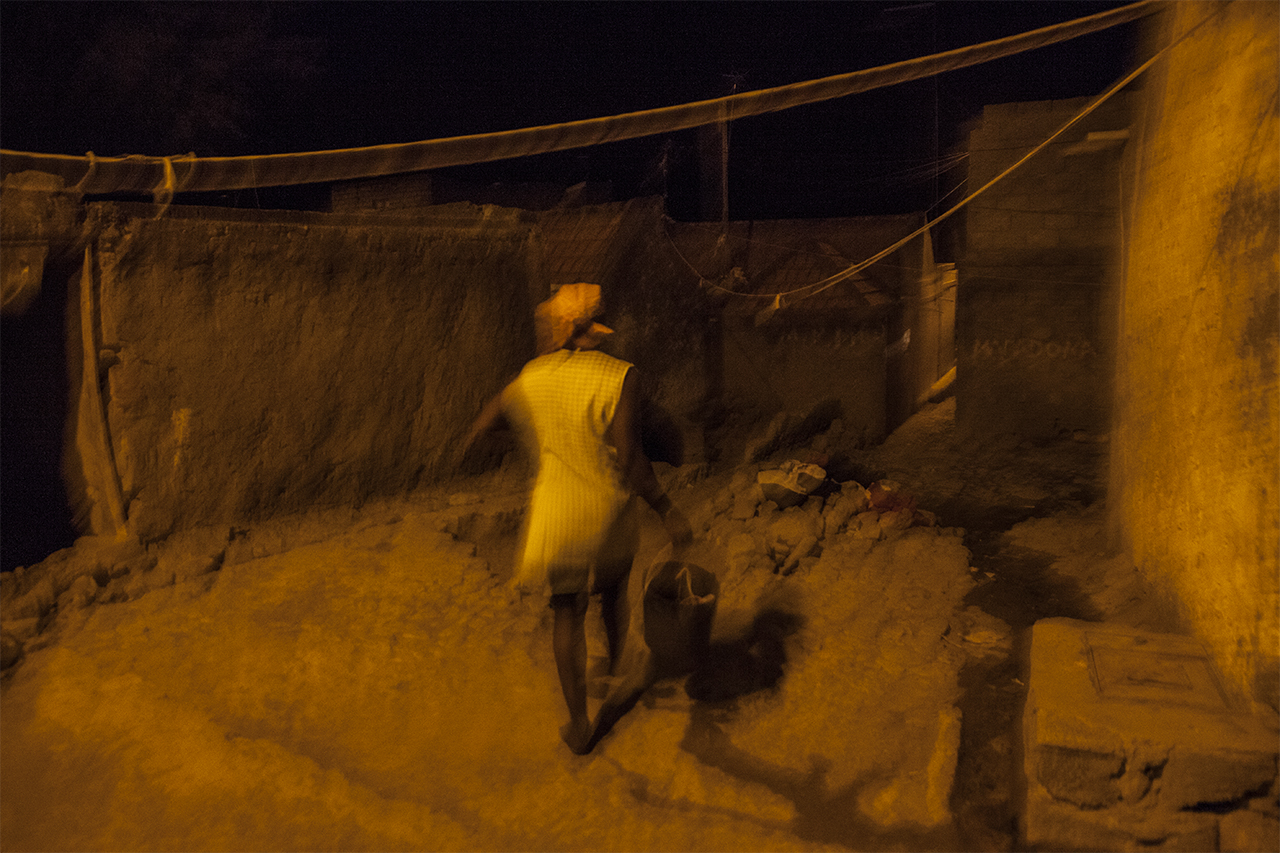




















Charco, Ribeira da Barca, Santiago, Cape Verde. Hundreds of women and men from this tiny village of fishermen do not have anymore the amount of their main resource; the entire community changed job and now illegally sell the sand of the beaches themselves.

Ja and other workers of Charco wait for men, who will take care of the collecting sand from the sea. Charco, Ribeira da Barca, Santiago, Cape Verde

Entire families work in this business, that is one of the few possibles to survive. Men are about ten meters from the shore, collect the sand with the shovel from the bottom of the sea, and fill the buckets that women carry on their heads. Two loaded shovel and the bucket is full of black sand wet. To exit from the sea, people are barefoot on the pebbles, and they have to be careful to follow the right current and wave, otherwise they risk to fall, losing 20 pounds of sand.

This type of catch a few years ago was happening daily. Now it happens once in 10 days and people struggle to survive. Ribeira da Barca, Santiago, Cape Verde

Ja gets her bucket filled with sand. The bucket weights about 20 kilos. Wind and currents are often very strong and the temperature of the sea is around 20 degrees. Charco, Ribeira da Barca, Santiago, Cape Verde

Fishermen of the Spanish ship Punta Delgada La guardia make a transhipment of sharks and shark fins. Mindelo harbor, Sao Vicente, Cape Verde

Fishermen of the Spanish ship Punta Delgada La guardia make a transhipment of shark fins. Mindelo harbor, Sao Vicente, Cape Verde

The sand mining is an extremely hard activity: it’s performed at quick pace for about two hours per day. Charco, Ribeira da Barca, Santiago, Cape Verde

Ja and other women bring to the shore buckets of 20 kilos of wet sand. There are often strong currents in the ocean. Going out of the water is made even more difficult because of the pebbles in the soil. Sometimes, when the wave is too strong, women must immediately discard the bucket in water to avoid being subjected to twisting the neck. Charco, Ribeira da Barca, Santiago, Cape Verde

The construction industry is booming due to population growth. Santiago is the largest island in the archipelago of Cape Verde, owns half of the population. The building expansion is also promoted by Cape Verdeans migrated abroad, who increasingly want to build a second home, to enjoy the holidays in the future old age. Here a truck is loaded of sand by a woman working for G, a sand dealer. Chargo, Santiago, Cape Verde

The sand of Charco is collected and sold mostly to the nearby town Assomada to build houses. Most of the revenue from this activity goes into the pockets of truckers who sell sand. What Ribeira da Barca is just one example of a problem of national scope. Even the beaches of Ribeira das Prata, Sao Domingo, Nossa do Luxo and Santa Cruz have been targeted as an economic resource by a population exhausted by the continuous deterioration of living conditions. Charco, Santiago, Cape Verde

Assomada is a city near Ribeira da Barca. It's almost completely built with the Charco's sand. Assomada, Santiago, Cape Verde

Ribeira da Barca is a village on the Atlantic Ocean. It has a few thousand inhabitants, a few restaurants, a barber, one failed hotel, a pharmacy, 3 churches, a primary school, dozens of bars, a police station, an internet point. Fishing had always been the most important and fruitful economic resource, until it collapsed a few years ago. Ribeira da Barca, Santiago, Cape Verde

Duca, one of the brothers of Ja, is a fisherman. He discuss the reasons of the decline of fish. Along with the other 13 fishermen, he comes back home with 50 fish after a night trip of several hours. The result is very poor: 4 fish per person, the catch is not enough to be sold. Ribeira da Barca, Santiago, Cape Verde

Ja is 29 years old. To maintain her family and to afford to send her daughter Jeciny to school, she illegally gathers the sand in the sea. Then she sells it to truckers who use it as a building material. The illegal sand mining arose consequently to a drastic decline in fish resources. Ribeira da Barca, Santiago, Cape Verde

Ja and her neighbors share most of the moments of the day, at work in Charco and at home. Here a moment after a shared donner. Ribeira da Barca, Santiago, Cape Verde

Ja prepares dinner: rice, beans, and sometimes a Garopa, a local fish. She lives alone in her house that is one room only plus a shared kitchen with the neighbors. She pays a monthly rent of 2000 ECV. Her place is not spacious enough, so her daughter lives in the grandmother's home. Still, it's Ja who provides for her daughter food and money for school. Ribeira da Barca, Santiago, Capo Verde

The collection and destruction of the sand of the beaches and many have drastic consequences, both geological and environmental, that have an impact on the tourism and agriculture. The citizens of Ribeira da Barca, could live of a sustainable tourism, if the environmental beauty were preserved. The seawater having no more physical barriers invades contaminating groundwater with salt and agriculture nearby is damaged. Ribeira da Barca, Santiago, Cape Verde